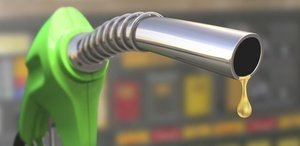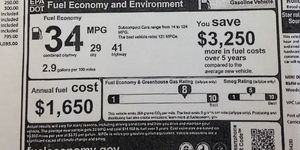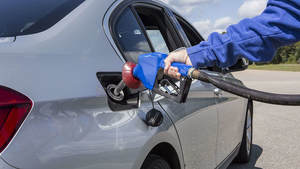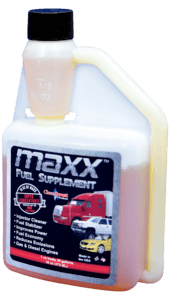The Truth about MPG Ratings
“What happened to the standard MPG ratings that were developed in the early 1970’s? Why did it take all the way until 2008 to make an all important adjustment to the ratings? Why are we being bamboozled into thinking that they are any more accurate today?“
 After the great Carpocolypse of 2008, automakers were forced to change their gas-guzzling ways. Americans could no longer afford to get just 12-15 miles from a $5 gallon of gas. Times were changing, and modern cars had to change with them. By 2012, hybrids and fuel-sipping crossovers had become all the rage, and the EPA vowed to keep the thrift-party going with a new round of fuel economy standards and MPG ratings. But who actually oversees compliance to these rules, our super-efficient government?
After the great Carpocolypse of 2008, automakers were forced to change their gas-guzzling ways. Americans could no longer afford to get just 12-15 miles from a $5 gallon of gas. Times were changing, and modern cars had to change with them. By 2012, hybrids and fuel-sipping crossovers had become all the rage, and the EPA vowed to keep the thrift-party going with a new round of fuel economy standards and MPG ratings. But who actually oversees compliance to these rules, our super-efficient government?
How it Worked in the 70’s
In the early 1970’s, the newly formed Environmental Protection Agency developed a standardized test to determine a vehicle’s emissions and fuel consumption or MPG ratings. Known as FTP or ‘the city cycle’, the test is performed on an adjustable dynamometer (essentially a big drum in the floor that a car’s drive wheels can sit on and spin) which is programmed to give varying rates of resistance in order to simulate hills and other types of terrain. The 11 mile test was designed to mimic rush-hour traffic in downtown Los Angeles (circa 1972), with 23 stops, a top speed of 56 mph, and an average speed of 21 mph. A second 10.3 mile test cycle was added in the late 70’s to measure a vehicle’s fuel consumption and MPG ratings on the highway. The results of these tests are then certified by the U.S. Government.
Time Marches On with MPG Ratings
In 1987, the highway speed limit was raised from 55 mph to 65 mph.  Obviously, a vehicle that is traveling 10 mph faster, will consume more fuel. However, the EPA didn’t adjust its testing procedures to account for the higher speeds of modern driving until 2008! They added three more test cycles that were originally designed in the late 90’s to measure emissions. And the results often represent only a “best case scenario”.
Obviously, a vehicle that is traveling 10 mph faster, will consume more fuel. However, the EPA didn’t adjust its testing procedures to account for the higher speeds of modern driving until 2008! They added three more test cycles that were originally designed in the late 90’s to measure emissions. And the results often represent only a “best case scenario”.
Every new car sold in America must have a Monroney sticker to show relevant information like the vehicle’s options, price, and fuel economy or MPG ratings. The fuel economy figures (city / highway / combined) must be certified by the Environmental Protection Agency before the car can go on sale. However, the EPA doesn’t actually test all of the cars that it certifies. Automakers are tasked with performing the MPG ratings test cycles in-house and the resulting data is then turned over to the government, where they decide whether or not the results are accurate.
A Car Manufacturer Caught in a Lie
 Should a carmakers MPG ratings not fall within a reasonable range of the expected outcome, the EPA can elect to perform an audit on the company’s product line. Currently, they perform 200-250 in-house tests per year at their state-of-the-art lab in Ann Arbor Michigan. Each MPG test is performed in a climate-controlled laboratory using specially blended fuel to ensure accuracy. If an automaker is found to be “fudging” the MPG ratings results, they’re fined millions of dollars, and the offending cars receive a lower MPG certification. This happened to Hyundai in 2012, when an EPA audit revealed that Hyundai KIA had overstated the MPG rating for nearly a million cars between the 2011-2013 model years. This cost the Korean car giant nearly half-a-billion dollars in fines and restitution.
Should a carmakers MPG ratings not fall within a reasonable range of the expected outcome, the EPA can elect to perform an audit on the company’s product line. Currently, they perform 200-250 in-house tests per year at their state-of-the-art lab in Ann Arbor Michigan. Each MPG test is performed in a climate-controlled laboratory using specially blended fuel to ensure accuracy. If an automaker is found to be “fudging” the MPG ratings results, they’re fined millions of dollars, and the offending cars receive a lower MPG certification. This happened to Hyundai in 2012, when an EPA audit revealed that Hyundai KIA had overstated the MPG rating for nearly a million cars between the 2011-2013 model years. This cost the Korean car giant nearly half-a-billion dollars in fines and restitution.
How Can We Get Closer to What is Advertised for MPG Ratings?
Alright, so we know that carmakers perform their own MPG ratings & tests, and the EPA basically tries to keep them honest. But what does that mean for you? Well, first of all, those MPG ratings represent the mileage that you could get under ideal driving conditions. Except, you don’t live in a perfect world, so most of the time, you’re going to have to work to get the best gas mileage. And that means adjusting your driving habits accordingly. However, you can also use high quality fuel additives to boost your vehicle’s efficiency.
One of the best fuel treatments currently on the market is called CleanBoost® Maxx™. It’s designed to remove the dirt and corrosion in your fuel system, which is left behind by chemicals in the gas or diesel that you’re burning. Over time, these tiny deposits will build up, causing your motor to work harder to create power. CleanBoost® Maxx™ is different than most all other additives on the market due to its chemical makeup… it’s really a fuel catalyst, which by definition changes how the fuel burns in the cylinder. It’s very beneficial and effective on ethanol, which has been proven to destroy engine fuel components even on the newest of vehicles. CleanBoost® Maxx™ also breaks down carbon deposits and corrosion, allowing the engine to burn them off in the combustion cycle. Your engine will then be able to create more power from less fuel, which can result in as much as 10% better fuel economy and increased horsepower & torque.
Maybe the engineers at Hyundai spiked the gas with CleanBoost® Maxx™ before they performed their mpg ratings tests.
About the Author
Tech Guy
Automotive enthusiast, passionate about Jeeps, hot-rods, turbos, performance, efficiency, diesels, fuels, high performance oils, additives and anything with an engine.
